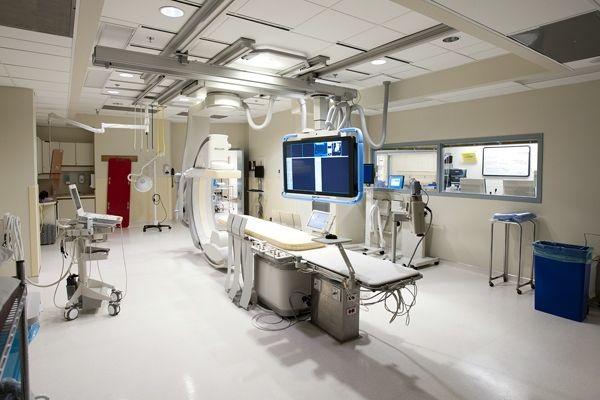Effective immediately masking is required for everyone when present on all inpatient units, in the Emergency Department (ED), the Urgent Care Centre (UCC), and the Children’s Outpatient Centre (COPC).
Interventional Radiology
Interventional radiology (IVR) uses minimally invasive image-guided procedures to diagnose and treat diseases in nearly every organ system. The concept behind interventional radiology is to diagnose and treat patients using the least invasive techniques currently available in order to minimize risk to the patient and improve health outcomes. To do this we will use different imaging techniques, (x-ray, CT, ultrasound, MRI) to allow us to direct small catheters to the body and where possible treat your condition.
Interventional Radiology is offered as both an inpatient and outpatient procedure at KGH. We have two full angiography suites that are used for approximately 2,000 Peripherally Inserted Central Catheters (PICC) procedures per-year as well as a wide variety of biopsies, angioplasties, stent insertions and embolizations. Some examples of these procedures are:
- Feeding tube insertions
- PICC line (peripherally-inserted central catheter)
- Biopsy
- Angiogram
- Angioplasty
- Stent insertions
- Embolization
- Radiofrequency ablations
- Nephrostogram procedures (kidney-bladder)
For additional information please visit the Society of Interventional Radiology website.
About the IVR Team
- Interventional radiologists are physicians who have completed an undergraduate degree, four years of medical school, a one year internship, a diagnostic radiology residency program and then a one or two year fellowship in vascular interventional radiology
- Interventional technologists are registered medical imaging technologists (MRT) with an additional 6 months of training in interventional radiological procedures. The IVR technologists operate the radiological equipment, sets up the room, prepare sterile trays and gather appropriate supplies for each procedure. During long procedures it is the MRT that assists the IR as scrub technologist.
- Interventional nurses are registered nurses with additional training in critical care and IVR procedures. Before, during and after procedures the IVR nurses provide physical and emotional support for the patient. When needed they will administer medications such as the conscious sedation and monitor the patient’s vital signs and progress throughout the procedure.


Interventional Radiology Room
